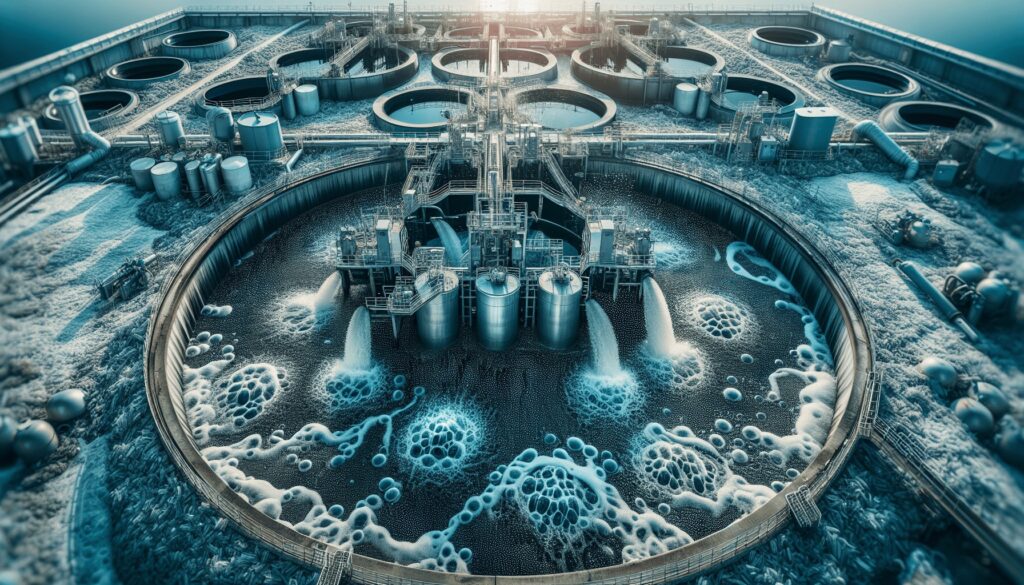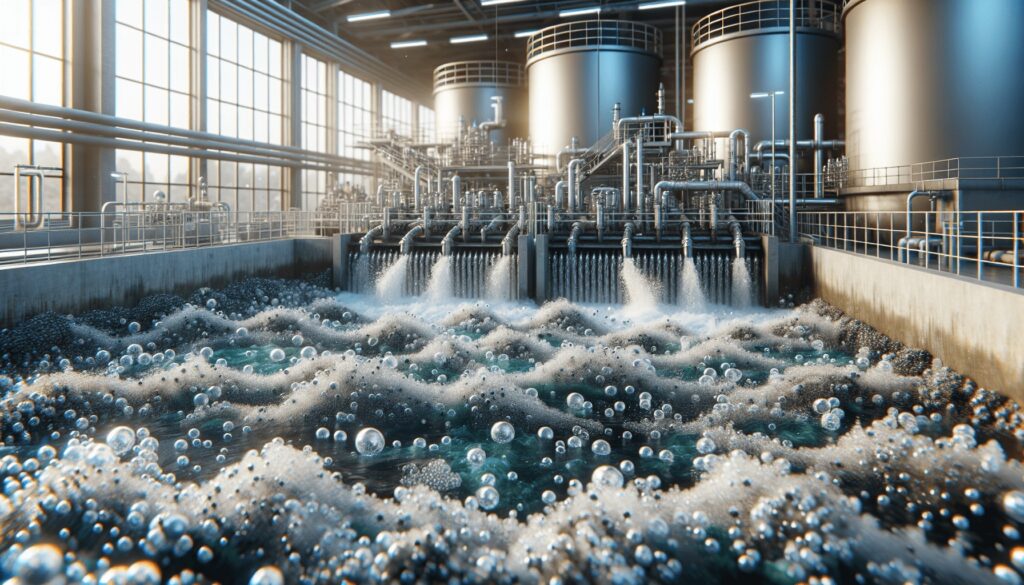Have you ever wondered how to handle high ammonia loads in activated sludge systems? It’s a crucial aspect of wastewater treatment that can make a significant difference in the performance of your facility. Ensuring that your system efficiently manages this challenge can lead to more effective outcomes and better compliance with environmental regulations. Let’s walk you through the intricacies of this topic in a way that feels like a conversation between old friends.
Understanding Ammonia and Its Impact
What is Ammonia?
Ammonia, a compound of nitrogen and hydrogen with the formula NH₃, is a colorless gas with a characteristic pungent smell. In wastewater treatment, ammonia is a common pollutant that needs careful management. Its levels can rise due to various factors, including industrial discharges, agricultural runoff, and even decomposition of organic matter.
Why is Ammonia a Concern?
Ammonia is not just a smelly inconvenience; it poses real environmental risks. High ammonia concentrations can be toxic to aquatic life and lead to algal blooms, resulting in depleted oxygen levels in water bodies. For these reasons, regulatory agencies have strict limits on allowable ammonia levels in treated wastewater.
How Does Ammonia Enter Activated Sludge Systems?
Ammonia finds its way into activated sludge systems primarily through the influent wastewater. Domestic sewage, industrial effluents, and agricultural runoff are typical sources. Understanding how ammonia enters your system helps in identifying critical points where intervention might be needed.
Activated Sludge Systems: An Overview
Basics of Activated Sludge
Activated sludge is a process used in wastewater treatment that involves aerating the wastewater to promote the growth of microorganisms. These microorganisms digest organic pollutants and convert ammonia to less harmful compounds.
Components of Activated Sludge Systems
Your activated sludge system comprises several components, each playing a vital role:
- Aeration Tank: Where the sewage is mixed with air to facilitate microbial activity.
- Settling Tank (Clarifier): Separates treated water from sludge (biomass).
- Recirculation of Sludge: Part of the sludge is recirculated back into the aeration tank to maintain the microbial population.
- Sludge Handling: The excess sludge is treated and disposed of.
Key Parameters in Activated Sludge Systems
Efficient operation hinges on monitoring crucial parameters:
- Dissolved Oxygen (DO): Ensures that microbes have enough oxygen to grow.
- Mixed Liquor Suspended Solids (MLSS): Indicates the concentration of microorganisms.
- pH and Temperature: Affects microbial activity and growth.
- Ammonia and Nitrate Levels: Important to monitor conversion efficiency.

High Ammonia Loads: Challenges and Solutions
Identifying High Ammonia Loads
How to Recognize the Signs
High ammonia loads can manifest through several indicators:
- Odor: Ammonia has a very distinct, sharp smell.
- Test Results: Elevated ammonia levels in regular testing.
- Operational Issues: Poor settling of sludge and increased sludge volume index (SVI).
Sources of High Ammonia Loads
Understand where the elevated ammonia is coming from:
- Industrial Discharges: Factories and plants that use ammonia or produce nitrogen-rich waste.
- Agricultural Runoff: Fertilizers can leach into water sources leading to high ammonia levels.
- Sewage Overload: Increase in population or unexpected sewage influx can raise ammonia concentration.
Addressing High Ammonia Loads
Effective strategies to manage and mitigate high ammonia loads include:
Adjusting Aeration
Ammonia oxidation requires sufficient dissolved oxygen. Increase aeration to ensure enough oxygen is available for microorganisms to convert ammonia into nitrates.
| Aeration Adjustment | Benefits | Drawbacks |
|---|---|---|
| Increase Aeration Time | More Oxygen for Oxidation | Higher Energy Costs |
| Optimize Aerator Placement | Efficient Oxygen Transfer | Technical Complications |
Optimizing Microbial Population
Maintaining a healthy and active microbial population is vital:
- Bioaugmentation: Adding specific strains of bacteria.
- Nutrient Balancing: Ensure essential nutrients are available for microbes.
Process Modifications
Sometimes, tweaking the process itself can help:
- Step-Feed Process: Divides inflow into multiple points in the aeration basin.
- Anoxic Zones: Creating zones with no oxygen to encourage denitrification, converting nitrates back to nitrogen gas.
Advanced Techniques and Technologies
Nitrification and Denitrification
These biological processes are crucial in managing ammonia:
- Nitrification: Ammonia (NH₃) is oxidized to nitrite (NO₂⁻) and then to nitrate (NO₃⁻) by nitrifying bacteria.
- Denitrification: Nitrates (NO₃⁻) are reduced to nitrogen gas (N₂) by denitrifying bacteria under anoxic conditions.
Implementation of Membrane Bioreactors (MBR)
Membrane Bioreactors combine a conventional activated sludge process with membrane filtration. This combination can handle higher ammonia loads more effectively by retaining higher concentrations of biomass.
Use of Sequencing Batch Reactors (SBR)
Sequencing Batch Reactors hold significant potential for high ammonia loads. They treat wastewater in batches, allowing for better control over reaction times and conditions, essential for nitrification and denitrification.

Maintaining System Health
Regular Monitoring
Frequent testing helps in keeping ammonia levels in check. This includes:
- Daily Sampling: For key parameters like ammonia, nitrates, and DO.
- Online Sensors: Continuous monitoring for real-time data.
Regular Maintenance
Well-maintained equipment is the backbone of effective treatment:
- Aerators and Blowers: Regular checks and cleaning to ensure efficient operation.
- Sludge Handling Systems: Preventive maintenance to avoid blockages and overloading.
Training and Skill Development
Your team’s proficiency plays a crucial role:
- Continuous Training: Keep your staff updated with the latest techniques and technologies.
- Skill Workshops: Practical hands-on sessions to improve problem-solving skills.
Dealing with Operational Upsets
Identifying the Cause
When things go awry, diagnosing the root cause is essential. This might involve:
- Process Audits: Detailed inspections to pinpoint issues.
- Data Analysis: Review historical data for patterns and anomalies.
Corrective Actions
Taking swift and effective action can mitigate the impact of upsets. This could include:
- Process Tweaking: Temporary changes in aeration or sludge recirculation.
- Interventions: Use chemicals or additives as a short-term fix while addressing underlying issues.
Case Studies and Examples
Case Study 1: Industrial Plant with High Ammonia Discharge
An industrial plant faced issues with high ammonia levels due to its manufacturing process. By implementing a step-feed process and enhancing aeration, they managed to reduce ammonia levels by 30% within six months.
Case Study 2: Urban Wastewater Treatment Facility
A treatment facility in an urban area experienced a sudden rise in ammonia load due to rapid population growth. By adopting membrane bioreactors and conducting regular staff training, they maintained compliance with regulatory standards.
Future Trends and Innovations
Emerging Technologies
The field of wastewater treatment is continuously evolving. Innovations like advanced oxidation processes (AOPs) and anaerobic ammonium oxidation (Anammox) are making inroads, showing promising results in managing high ammonia loads more efficiently.
Automation and AI
Modern facilities are increasingly adopting automation and artificial intelligence. These technologies help in real-time monitoring, predictive maintenance, and even in making operational decisions, thereby increasing the overall efficiency of the system.
Conclusion
Managing high ammonia loads in activated sludge systems might seem daunting, but with the right knowledge and strategies, you can navigate these challenges effectively. From understanding ammonia’s impact to implementing advanced technologies, every step you take ensures that your system remains efficient and compliant. Remember, it’s about constant learning, adapting, and getting the details right.
Feel free to reach out to industry experts, engage in continuous learning, and always stay updated with technological advancements. Your proactive approach will safeguard the health of your activated sludge system, ensuring optimal performance and environmental compliance.